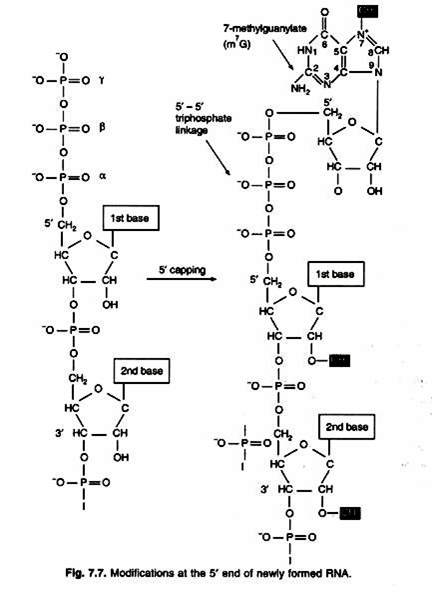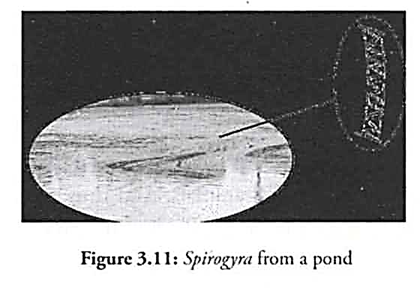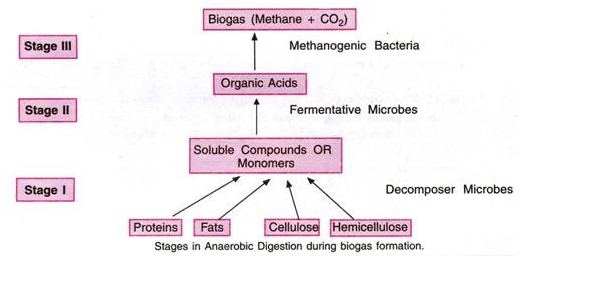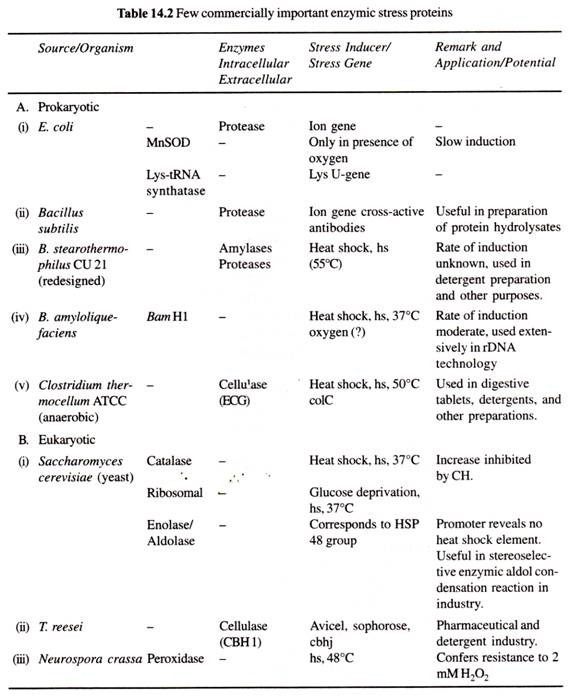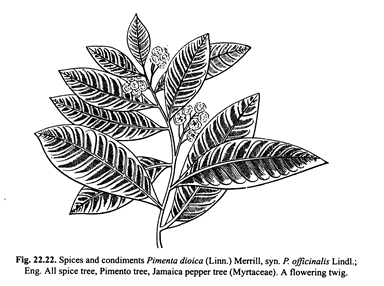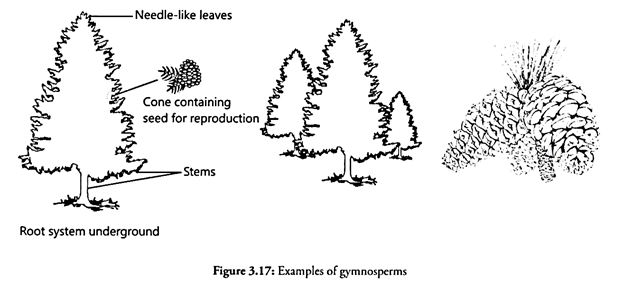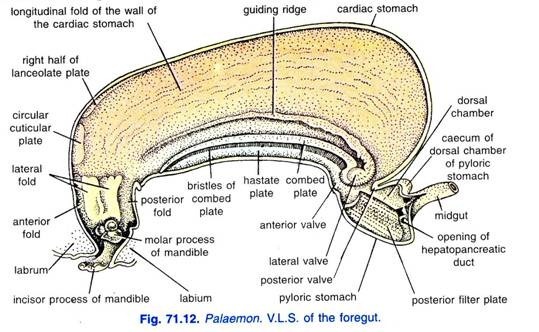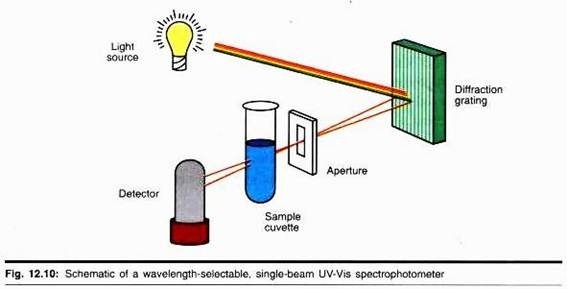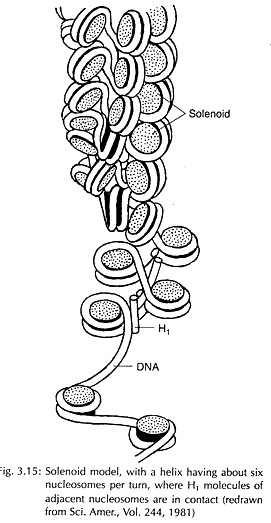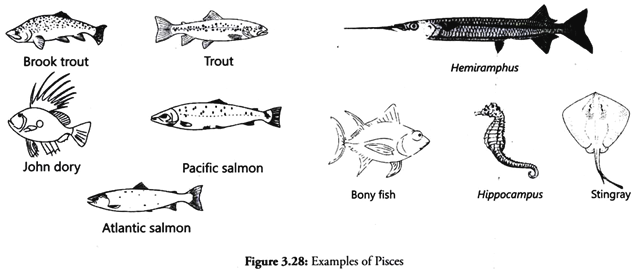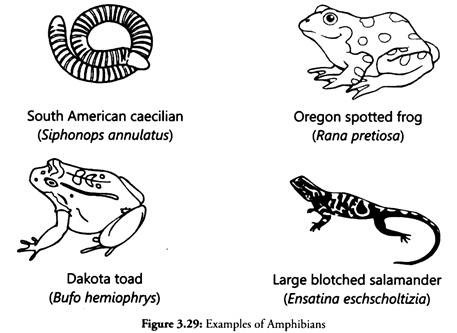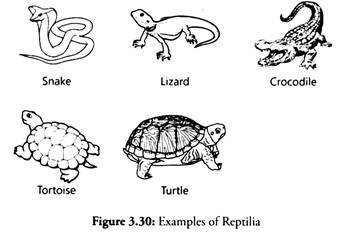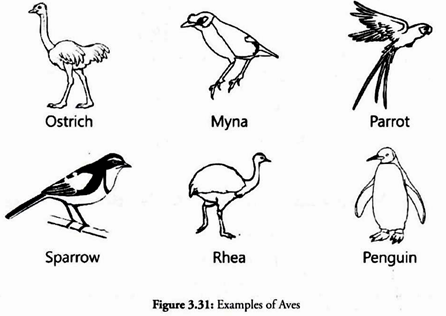Here is a term paper on the ‘Living Organisms’ for class 9, 10, 11 and 12. Find paragraphs, long and short term papers on the ‘Living Organisms’ especially written for school and college students.
Term Paper on the Living Organisms
Term Paper Contents:
- Term Paper on the Introduction to Living Organisms
- Term Paper on the Classification of Living Organisms
- Term Paper on the Nomenclature of Living Organisms
- Term Paper on the Kingdom Classification of Living Organisms
- Term Paper on the Kingdom Plantae and Its Division
- Term Paper on the Kingdom Animalia and Its Various Phylum
- Term Paper on the Classes of Sub Phylum Vertebrata
- Term Paper on the Characteristics of the Five Kingdoms of Whittaker
Term Paper # 1. Introduction to Living Organisms:
There are plenty of organisms on the planet Earth. There are 1.5 million species of plants and animals. Let’s consider a cat and cheetah, tiger and lion. All these have so many things in common and yet so many differences and thus they belong to the cat family. In the same way, there are so many varieties of flowers, plants, crops, microorganisms, animals which are similar to one another and can easily be grouped. To understand all these organisms well, they are organized into different groups with similar characteristics. Even after centuries of effort, some 86 percent of earth’s species have yet to be fully described. According to a new study, our planet is a home to 8.7 million species. All of these are not known, studied even discovered and hence remain unclassified.
Term Paper # 2. Classification of Living Organisms:
Biological Classification of Living Organisms:
Biological classification is the method of grouping organisms into different orders. This classification is based on their genus and species. The science of describing, classifying and naming the organism, is known as taxonomy and the orders of organisms is called as taxon.
A famous botanist Carl Von Linne, developed the method of binomial nomenclature in the year 1750. The term “binomial nomenclature” is derived from the Latin word meaning “scientific name”.
Classification and Evolution of Living Organisms:
European and American biology included mainly taxonomy or classification of organisms into different categories. This classification was based on their physical characteristics and studied natural relationship among all organisms.
The leading naturalists and the scientists of 18th and 19th centuries spent their lives in identifying and naming newly discovered plants and animals. However, few of them were curious for the patterns of similarities and differences between the organisms.
Most naturalists, two centuries ago assumed that the plants and animals (including humans) had been originated in their present form and that they have remained unchanged since their origin.
As a result, it made no sense to ask how organisms have evolved over the time. Similarly, it was unbelievable that the animals or the plants may have had a common ancestor or the extinct species may have been ancestors of the modern ones.
One of the most important 18th century naturalists was a Swedish botanist and medical doctor named Karl von Linne. His work is present in 180 books, which mainly describe plant species in extreme detail. As all his writings were mostly in Latin, he is known to the scientific world today as Carolus Linnaeus.
In 1735, Linnaeus published an influential book entitled Systema Naturae in which he outlined his scheme for classifying all known organisms along with the ones which were not discovered according to the greater or lesser extent of their similarities.
This Linnaean classification system was widely accepted by the early 19th century and is still used as the basic framework for all taxonomy in the biological sciences today. The Linnaean system uses two categories (Latin names), genus and species, to designate each type of organism.
For example, homo is our genus and sapiens is our species. Linnaeus also created higher classification which gave home to many small categories. For instance, he placed all monkeys and apes along with humans into the order Primates (from the Latin primus meaning “first”). It suggested that humans were “created” first. However, it also indicated that people are animals.
In the 19th century, Charles Darwin provided conclusive evidence that evolution of life forms in his book named The Origin of Species. In addition, he proposed natural selection as the mechanism responsible for these changes.
By Darwin’s time, the biological classification was considered reflecting evolutionary distances and relationships between organisms. The creatures of our time have had common ancestors in the past.
Further classification is done by naming the sub-groups at various levels as given in the following scheme:
Thus, by separating organisms on the basis of a hierarchy of characteristics into smaller and smaller groups, we arrive at the basic unit of classification, which is a ‘species’. A species includes all organisms that are similar enough to breed and perpetuate.
Term Paper # 3. Nomenclature of Living Organisms:
The need to standardize the names of organisms worldwide is for simplification for scientist to know any organism in detail and maintain uniformity. You must have heard of the scientific names of plants and animals, which are different from the ones we use in common.
For example, the scientific name of Human Beings is Homo sapeins; Mango tree is named as Mangifera indica; Cobra is named as Naja naja. The process of naming organisms scientifically is called as ‘Taxonomy’. Assigning scientific names to organism was first developed by a Swedish scientist ‘Carious Linnaeus’.
The two words used to name the organisms represent its genus name and its species name. This system is known as the binomial nomenclature. International Code for Biological Nomenclature is the system used for naming organisms.
Biological classification is necessary as the number of living things is enormous. Every year many new species are discovered and identified and added to the group. The organisms vary greatly in their form, structure and their mode of life.
The organisms need to be divided into groups and subgroups in a definite plan, so that the study of living things becomes easy. The scientific name remains the same world-wide and hence is easily recognizable. As language changes after every 10 kilometers, even the common names of an organism changes.
The possibility of confusion due to this multiple naming of the organism is eliminated by scientifically naming the organism. Any incorrect name to a particular organism can be corrected. The scientific names are often descriptive in regards to the characteristics of the organisms.
How to Write Scientific Names?
1. Scientific names should always be italicized. However, if you are writing something on a typewriter or by hand (like on a biology test) the proper, official thing to do is to underline the scientific name to indicate that it is supposed to be italicized.
2. Also, note that the first letter of the genus name is always capitalized, and the first letter of the species name never is.
3. Example – Homo sapiens.
Term Paper # 4. Kingdom Classification of Living Organisms:
The important characteristics of the five kingdoms of Whittaker are as follows:
A. Monera:
The Monera kingdom consists of mainly small unicellular, i.e., single celled live forms. Bacteria, Cyanobacteria, Archaebacteria and Mycoplasma are some examples. Monerans are prokaryotes and are thus simple and basic in structure.
They lack membrane bound nucleus and membrane bound cell organelles. The genetic material is present as a small ring. The cell wall is present and is made up of peptidoglycan. Some are autotrophs (prepare their own food like plants) and some are heterotrophs (rely on autotrophs for nutrition (food) source).
Monerans are present everywhere. They are either aerobic or anaerobic. Aerobic bacteria need oxygen to grow and anaerobic bacteria grow in the absence of oxygen. The mode of reproduction is asexual reproduction in all Monerans. Due to the simple structure, many scientist consider Monerans to be the oldest life form of earth from which life may have originated.
B. Protista:
The members of Kingdom Protista are unicellular eukaryotes which are mostly aquatic. They all need some kind of a water-based environment, which can be fresh or marine water, snow, damp soil, polar bear hairs, in which they live. All of them are aerobic and have mitochondria. Some of them are photosynthetic.
Diatoms, golden algae, Euglena and protozoans like Amoeba, Paramecium Plasmodium, etc. are some examples. Cilia (hair like, flagella (whip like) appendages are present in some protists, which help in movement. Some are autotrophic and heterotrophic.
C. Fungi:
You all must have seen mushroom sprouting on the branch of a fallen tree or damp region in rainy season. Yes, mushroom is a fungus (fungus-singular and fungi-plural). This kingdom of fungi also includes lichens, Mycorrhiza, Aspergillus, yeast, etc.
Fungi are eukaryotes. Some are unicellular while others are multicellular. Unicellular later evolves into multicellular at certain stages of life. The mode of nutrition is heterotrophic and mainly feeds on decaying organic material (saprophytic).
Have you noticed mold on stale bread? Look at the picture above.
The walls of the fungi is made of a tough sugar component called as chitin. The “body” of a fungus is called a mycelium (plural is mycelia) (myce means fungus). A mycelium is a network of filaments.
Each of this filament is called a hypha (pl. means hyphae; hypha means web, weaving). Growth of a mycelium (the hyphae therein) can be very rapid, hence mushrooms (which are composed of densely-packed hyphae) can pop up in a lawn overnight. The reproduction is asexual and vegetative.
Fungi are found in association with blue green algae and this symbiotic association is called as lichen.
Terms to Know:
Saprophytes are organisms dependent on absorption of the nutrients from dead organic matter (dung, corpses, etc.). These organisms help in decay of host organisms, hence, these are important and necessary decomposers.
Parasites take up nutrients and food from the body fluids of a healthy host organism, to the detriment of the host.
Mutualistic symbionts is a combination of organisms out of which one absorbs nutrients from a host and in return gives some beneficial function(s) to the host.
D. Plantae:
As the name suggests, this kingdom includes all the plants. Plants are multicellular eukaryotes. Plants are mostly terrestrial, and some few are aquatic. Almost all the plants are photosynthetic (containing chlorophyll) in nature. Plant cell walls are made of cellulose. It includes herbs, shrubs, trees, flowering and non-flowering plants, etc. 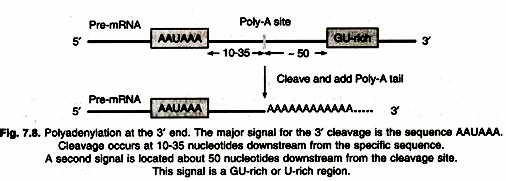
E. Animalia:
Animals are heterotrophic eukaryotes, which are multicellular lacking cell wall.
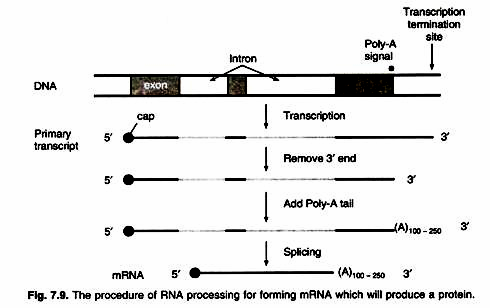 Following chart displays the distribution of organisms into kingdom:
Following chart displays the distribution of organisms into kingdom:
Term Paper # 5. Kingdom Plantae and Its Division:
The Kingdom Plantae contains about 300,000 different species of plants. Among the five kingdoms, Kingdom Plantae is very important as they are the source of food for all other living creatures present on planet earth, which depends on plants to survive.
This kingdom includes all types of plants like herbs, shrubs, trees, creepers, climbers, aquatic plants, desert plants, mountain plants, flowering and non-flowering plants, etc. Thus, classification is necessary to group plants with similar characters into one.
Plants are divided into division based on:
1. Whether plant body has well differentiated, distinct components
2. The presence or absence of vascular tissue. Vascular tissue helps in transporting substances (water, minerals and sugars) throughout the plant.
3. The seeds are the products of fertilized pollen and ovule in a plant. Seeds contain embryo which stores food for seed nourishment.
Depending upon the above criteria, there are five divisions. Now, let us see each division in detail:
(a) Thallophyta:
This division is based on the undifferentiated body parts of the plant. Mostly algae fall in this category. Spirogyra, Ulothrix, Cladophora, Lamnaria and Chara are some of its examples. Majorly, all are aquatic autotrophs Sporophyte with few exceptions.
(b) Bryophyta:
Bryophyta (Bryo = moss; phyto = plant; wort = herb, plant). The organisms under this division are non-vascular plants with an embryo stage in their developmental process. These organisms are simplest plants as they lack true roots, stem, and leaves differentiation.
These organisms are found in terrestrial as well as in very damp, shady places. They have no vascular system, thus directly absorb water from the soil, translocation is carried out from one part of plant.
Mosses have root-like rhizoids (rhizo = root; -oid = like, form) and leaf-like structures, but these are not true roots/leaves because they have no vascular system. They are non-flowering, and the reproduction is through spores.
Examples: Marchantia, Funaria, Riccia, etc. 
(c) Pteridophyta:
These are vascular plants, i.e. with a conducting system for transporting water and minerals from the soil through true roots to true leaves and stem. These are seedless plants, where the reproduction is through spores.
Pterido means wing/feather like. These plants have small leaves which look like wings. Pteridophytes are terrestrial. These lived 430 million years ago and are even found now in plenty. It is believed that other plants have evolved from pteridophytes. Horsetails, ferns and club mosses are some examples of pteridophytes.
(d) Gymnosperms:
Gymnosperms (gymno = naked; sperma = seed), are seed bearing, non-flowering plants. The seeds are present in an enclosed structure. Gymnosperms are all terrestrial plants and are usually perennial, evergreen and woody. Cycas, Gingko, Conifers, pine trees, deodars are some example. They have megasporophyll and microsporophyll as reproductive organs for female and males respectively.
(e) Angiosperms:
Angiosperms are flowering plants that have roots, stems and leaves. These plants bear seeds in the ovary, which is well protected inside the flower. The flower falls, and the ovary develops into a fruit. The seed has an outer cover which is called as cotyledon. Cotyledon later merges with the seed when it grows into the plant. Some seeds have only a single cover or cotyledon and are called monocot.
Example: Corn, grass, and palm trees.
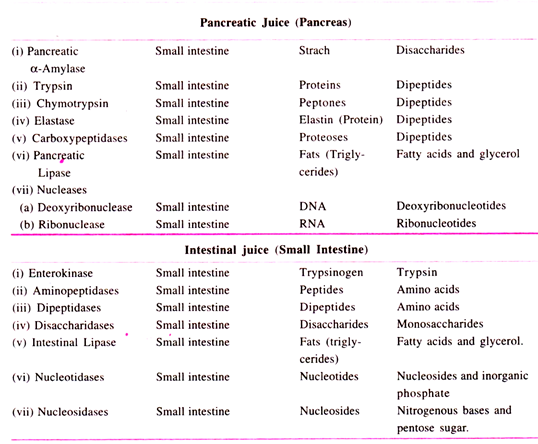 Figure 3.18: Examples of Angiosperms
Figure 3.18: Examples of Angiosperms
Dicot:
The seed has two seed cotyledons. Dicots include oak trees, daisies, and roses.
The given chart displays some other characteristics which will help you differentiate between the Monocots and Dicots other than cotyledons:
Term Paper # 6. Kingdom Animalia and Its Various Phylum:
As the name suggests, all the animals under this kingdom are grouped into various phylum. All the animals are multicellular eukaryotes with heterotrophic nutrition. Most of the animals ingest food and then digest it in the internal cavity. Most of the organisms (not all) are motile this indicates that they can move independently and spontaneously.
There are more than 9 million species of animals, out of which only 800,000 species are identified. This study includes the study of organisms present in past years with the help of fossils.. Animals are divided into various sub-groups. All over the world, the biologists have identified about 36 phyla within the animal kingdom. The major divisions include birds, mammals, reptiles, fish, amphibians, etc.
Kingdom Animalia has approximately 36 sub-divisions known as ‘phyla’. Each phyla share particular structural and functional properties that together separate it from the other phyla. Below are the most common phyla classified under the traditional biological methodology.
1. Porifera:
Porifera (Pori = pore; fer = bear, carry). Let us travel to the world of water, sea in particular. Porifera means pore bearing, and thus these animals are like sponges (also called sponges) with many pores in the body which collect food and send it to a canal in the center of the body.
They are non-motile and attached to the sea bed (floor). The exoskeleton is tough. There are no tissues, nerve cell or any organs. The body cells are undifferentiated. They have both the sexes in the same body. Examples are Sycon, Euspongia, Spongilla, Euplectella, etc.
2. Coelenterata (Cnidaria):
Jelly Fish is a member of the Coelenterata phylum. Other examples of this phylum are Hydra, Sea Anemone. These are marine animals with cells forming together an inner lining tissue and outer lining tissue.
They have a digestive cavity with one opening which serves as both a mouth to ingest food and for the expulsion of any wastes. They have tentacles near the opening which help in capturing the prey. Cnidarians have both sexual and asexual forms of reproduction. These are colonial animals which means are found in colonies, for example, Corals. Jelly Fish is called Aurelia.
3. Platyhelminthes:
Platyhelminthes (Platy = Flat, Helminth = Worm). These are flat bodies from top to bottom and thus also referred as flat worms. The internal body structure is little complicated when compared to above phylum. These are triploblastic (three layer of cells) in nature, meaning the cells differentiate and forms the outer lining, inner lining and some organs.
But there is no cavity (coelom). Most of them don’t have respiratory structures and “breathe” through their skin. Bilateral Symmetry is seen when the body is divided into half, the left side of the body is symmetrical and identical to the right side.
The free-living (water-dwelling) ones include Planaria. The reproduction is sexual but at times asexual reproduction is also seen (when cut into half they regenerate the body parts). They inhabit in both marine and fresh water. They are mostly endoparasites found in animals.
Example:
Taenia, Fascicola, and Liver flukes.
4. Nematoda:
Nematoda (Nema, nemato = a thread) These are called roundworms because their bodies are cylindrical. Some are free-living in aquatic habitats (including damp soil), while others are parasitic (Disease causing).
They have a digestive tract with openings at both the ends- a mouth and an anus. Thus it is said that they have a “tube-within-a-tube” body plan. They are bilaterally symmetrical and triploblastic. No fully developed and differentiated organs are present but they have a coelom like cavity called pseudocoelom. They have sexual reproduction with definite males and females.
Examples:
Round worms, pinworms, filarial worms- Ascaris, Wuchereria, etc.
5. Annelida:
Annelida (Annel = a little ring, a ring) This is a little familiar phylum, which you must have seen many times in your home garden. Some examples are earthworms, leeches, and Neries. These animals are found in a variety of habitats- fresh water, marine water as well as land. These are bilaterally symmetrical, triploblastic but with a true coelom. The organs are well-formed and arranged in the body one after the other in segments.
6. Arthropoda:
Arthropoda (Arthro = joint; poda = foot) This phylum includes all the insects and is the largest phylum. There are over one million species of insects existing today. They are found primarily everywhere, both on land and in water. Some examples are locusts, butterfly, scorpion, prawn, cockroach, grasshoppers, beetles, ant’s spiders, etc.
An arthropod has a segmented body covered by an exoskeleton made from chitin and other chemicals. Arthropods are bilaterally symmetrical with true coelom. Blood flows directly into the cavity as the circulatory system is open type with no blood vessels. The body is segmented and there are many legs with joint.
7. Mollusc:
This is the second largest phylum. Some examples are snails, octopus, squid, slugs, Unio, Pila, etc. These are aquatic and terrestrial with bilateral symmetry in the body. They have a soft foot which is used for locomotion.
Molluscs have soft-body and have a true coelom. They have an open circulatory system and the kidney-like organs for the excretion. Many have shells made primarily of calcium carbonate. Many molluscs have good eyes (snail, octopus, and squid).
Octopuses are famous for their well-developed nervous systems and brains (necessary to process the information from their sophisticated eyes). These are known to be very intelligent. Most molluscs have males and females, while garden snails are hermaphroditic.
8. Echinodermata:
Starfish, feather star, sea cucumber, sea urchins are some of the members of this phylum, which have spiny skin like a hedgehog with a tough exoskeleton made of calcium carbonate. These are triploblastic and have true coelom. They put hydraulic pressure in their tube feet to move and catch a prey as well.
9. Vertebrata:
Vertebrata a sub division (subphylum) of the phylum Chordata. Vertebrates are triploblastic, bilaterally symmetric, and triploblastic in nature. Organs are well developed and placed well in the cavity.
Chordates have a distinct and well developed notochord running in the back of the animal with muscles attached to it. It is called vertebrae (as the name suggest). It helps in the movement. The vertebrae protects the dorsal nerve cord.
They have a three part brain in a brain case to cover it. Also, they have specialized sense organs, a closed circulatory system, a chambered and muscular heart, red blood cells, and glomerular kidneys. Reproduction is mostly by sexual reproduction.
Term Paper # 7. Classes of Sub Phylum Vertebrata:
There are many classes under the subphylum vertebrata. Some of these classes are listed and briefed below:
A. Pisces:
This class includes fishes. Fishes are marine animals, which can be either fresh water or salt water. Fishes are cold blooded with two chambered heart. The fishes have a streamlined body which help them move easily in water and the tail which helps in changing directions. The exoskeleton has small scales. They obtain oxygen from the water for respiration through gills. Fishes can be bony (tuna) or cartilaginous (shark).
Examples:
Sharks, seahorse, salmon, trout, sting ray, etc.
B. Amphibia:
Amphibians include toads, frogs and salamanders. Amphibians can survive both on land and in water as respiration is either through gills or lungs. Heart is three chambered. They lack scales unlike fishes and possess mucous gland on skin which keep them moist.
The development of a muscular limb with defined joints and digits (tetrapod = 4 legs) is first seen in the amphibians. Also, in this class, for the first time an atlas allows the head to move up and down separately from the trunk. Modern amphibians have eggs, with no shells or membranes, which are laid in water.
C. Reptilia:
This class includes (reptili = creeping) the dinosaurs (dino = terrible; saur = lizard), snakes, turtles, crocodiles, and lizards. Reptiles have scales and are dry to the touch. Their eggs have leathery shells. Reptiles are exothermic (exo = out, outside), that is they maintain their body temperature through external means such as sunning on a rock or seeking shade.
These animals are cold-blooded, have scales and breathe through lungs. While most of them have a three-chambered heart, crocodiles have four heart chambers.
Examples:
Lizards, snakes, dinosaurs, crocodiles, alligators, garden lizards, turtles, etc.
D. Aves:
Aves (avi = a bird) This class includes birds. It is thought that birds are descended from dinosaurs. The basis for this thought was evidenced, in part, by the scales on their feet. Also, feathers are modified scales.
A key characteristic of birds is the presence of feathers. (It is also now known that many kinds of dinosaurs had feathers.) Birds’ bones are light weight for flight. Birds are endothermic (endo = within, inner), i.e. they control their body temperature from within (they’re “warm-blooded”). Birds’ vision is the best of all the vertebrates. Reproduction is sexual and fertilization is internal. Eggs are shelled.
Examples:
Sparrow, crow, eagle, ostrich, penguin, hawk, etc.
E. Mammalia:
Mammalia (Mamma, mammil = teat, nipple). The best examples of mammals are us, human beings. Yes, we are mammals. Since, we understand ourselves well so it will be easy for us to understand this class as well. Key characteristics of mammals are the presence of fur/hair all over the body and mammary glands, derived from modified sweat glands, which produce milk for the young ones.
Mammals have a diaphragm to aid in respiration. The heart is four chambered. They are endothermic. Most mammals bear young ones. However, a few of them, like the platypus and the echidna lay eggs, and some, like kangaroos give birth to a very poorly develop young ones.
Examples are man, dog, monkey, tiger, squirrel, mice, bats (they give birth to young ones. They have mammary glands and can fly), whale, etc. Mammals are found both on land and in water. 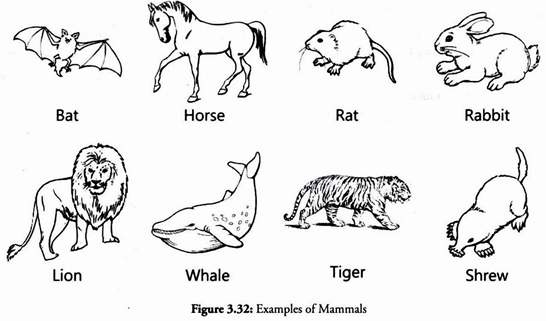
Class Vertebrate is Divided into Five Different Classes
Term Paper # 8. Characteristics of the Five Kingdoms of Whittaker:
The Five Kingdoms:




